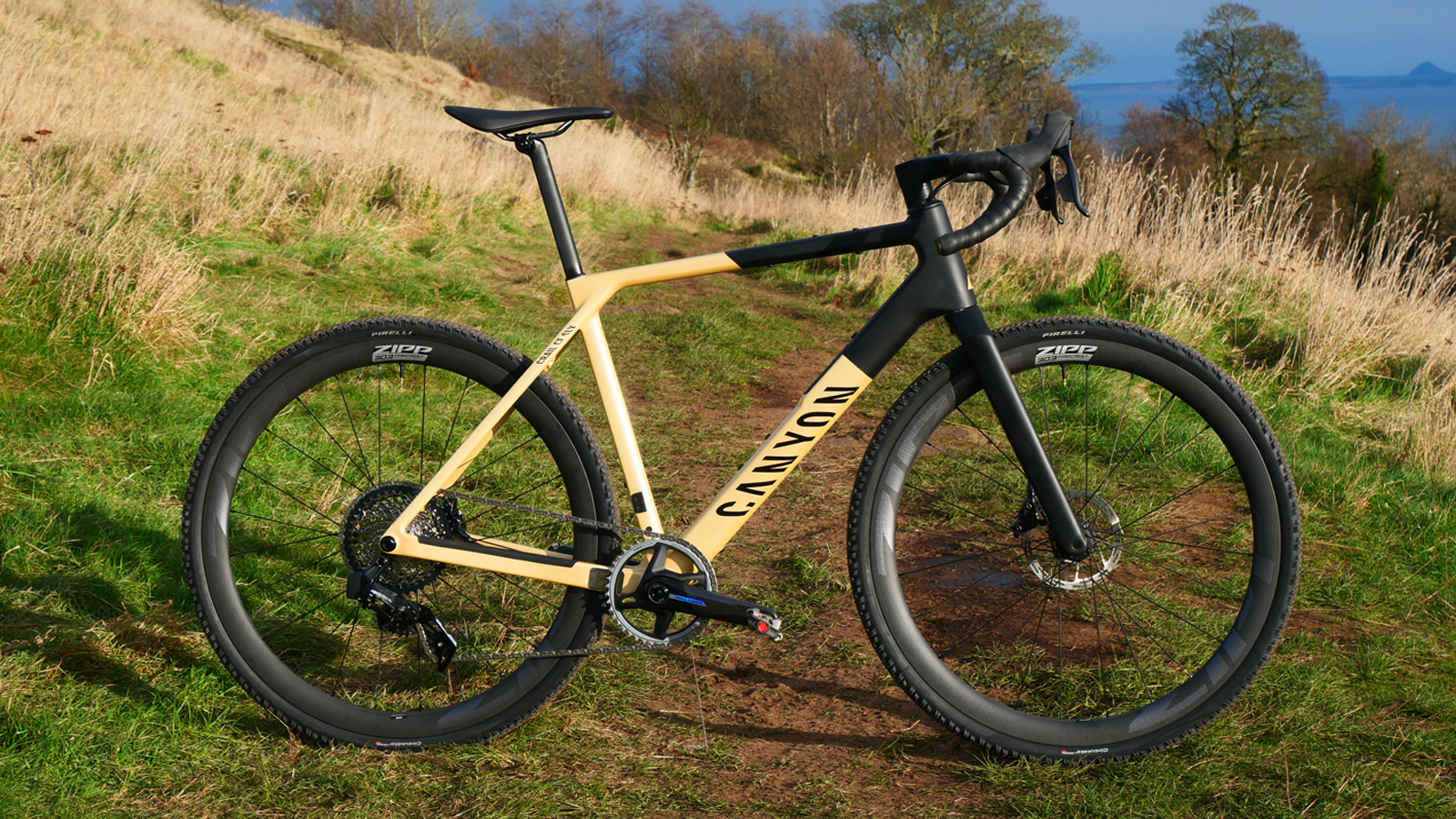
When Canyon first launched the Grail in 2018 it was the German brand's first and only gravel bike. Gravel was still in its infancy (bear in mind Shimano GRX wasn’t released until 2019) and nobody was sure what the future held for gravel. Canyon went bold with the Grail, rocking the bike industry with its unusual handlebar and oddly hunched headtube with the promise of fast off-road performance and comfortable ride quality.
A lot has changed in the last six years and gravel has become a multifaceted discipline in its own right. With the Grizl taking on the adventure duties in Canyon’s gravel range, Canyon has been able to cater the Grail to the specific needs of gravel racers. It's far more focused on speed now, gone are the wacky handlebars in favor of a new integrated ‘Double Drop bar’, plus revised geometry, enhanced aerodynamics, and a range of dedicated accessories are just some of the headline updates that should make the Grail even faster.
The results of these updates have already established the new Grail as one of the best gravel bikes competing in the gravel race scene, taking top spots at Unbound, Gravel World Champs, and FNLD GRVL to name a few. The Grail’s new race focus is undoubtedly quick, but what’s it like for the average gravel rider looking for a fast gravel bike? I have been testing the Canyon Grail CF SLX 8 AXS to find out.
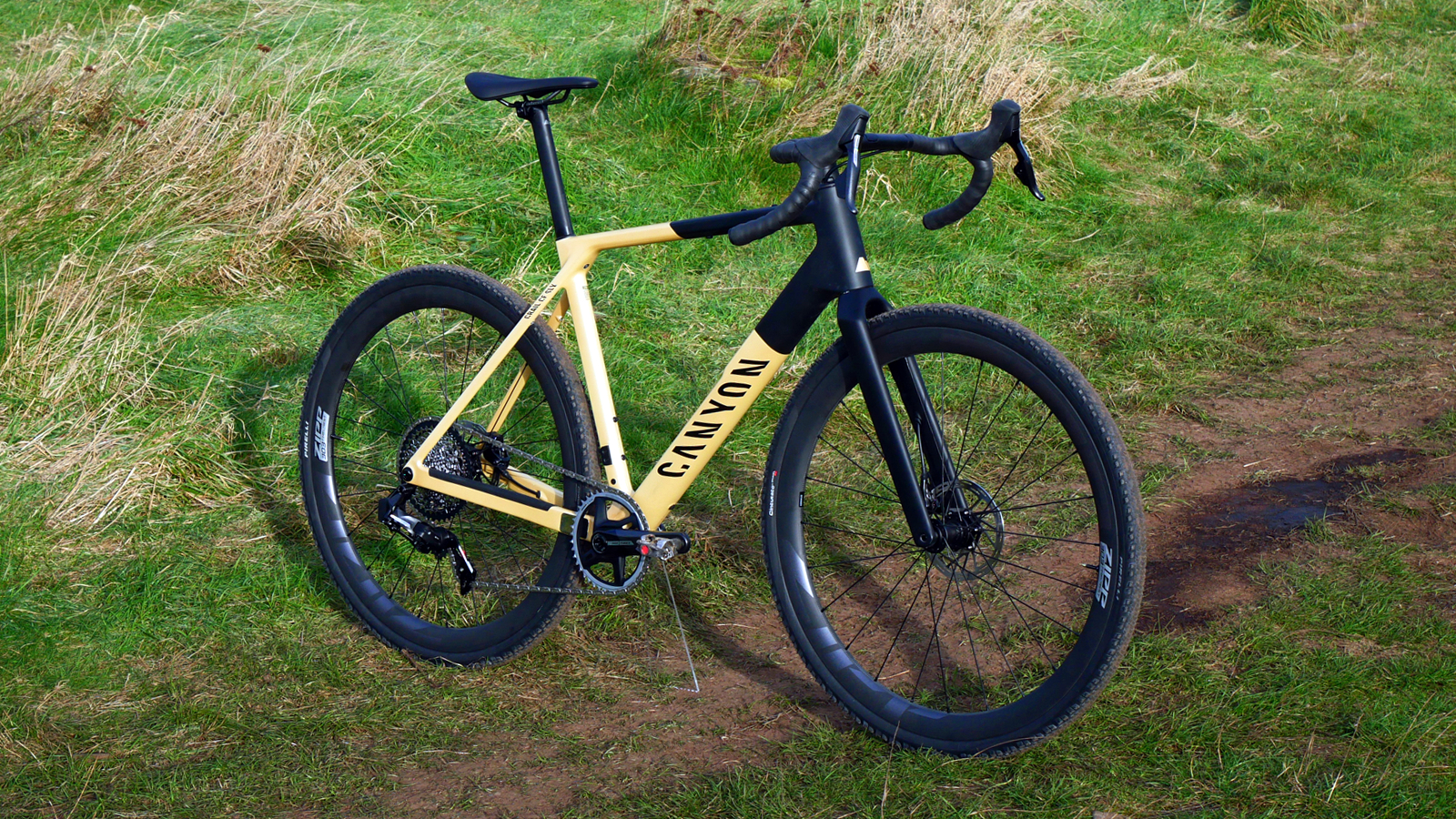
Design and geometry
In the pursuit of gravel speed, Canyon has completely redesigned the Canyon Grail leaving no stone unturned to optimize performance gains. Aero was a big consideration, with gravel racers frequently averaging over 35kph over long parcours making a bike cut through the air makes a huge difference. For the new Grail, Canyon borrowed tube shapes from its Ultimate road bike to improve airflow, semi-integrated the cabling, and replaced the Canyon S15 VCLS 2.0 leaf sprung post with a D-shaped post. In wind tunnel testing, Canyon says the new Grail saved 9.1 watts at 45 kph when tested back to back with an identical specced first-generation Grail.
Much of that 9.1-watt aero improvement can be attributed to the new one-piece carbon handlebar. The infamous two-tier ‘Double Decker’ handlebar of the original Grail has double the frontal area so that had to go and has been replaced by the new ‘Double Drop Bar’ design. Although the new handlebars have a far more conventional aesthetic, Canyon has deployed some unusual shapes to achieve its desired ergonomics. The handlebars drop slightly from the center point and sweep back by five degrees. The hood section of the bars has been extended giving more room for alternative hand positions and are flared by five degrees of flare, splaying out to 16 degrees in the drops. The CP0039 handlebar features Canyon’s new Gear Groove accessory mount, but more on that later.
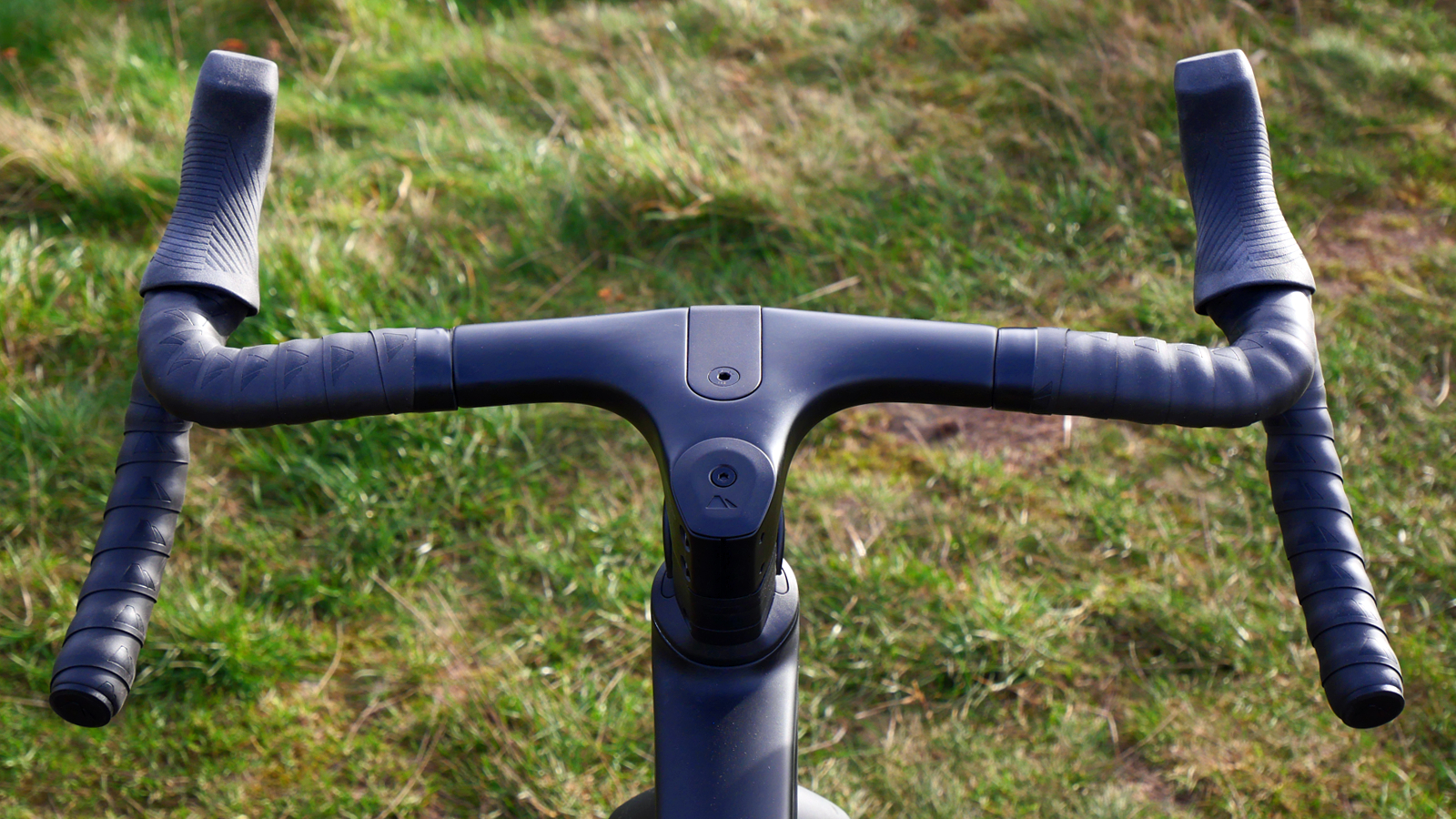
The aero savings don’t stop with new tube shapes and sleeker handlebars, Canyon has considered how riders can maintain those aero gains while still carrying everything they need for a ride. The Grail’s new Aero LOAD System consists of two elements; the Load Down Tube Storage internal frame storage and a Load Fidlock Quickloader frame bag. The storage is accessed through a hatch just above the downtube bottle cage and the hatch door also has storage for a 6-piece Canyon Minitool (included) and Topeak Micro Rocket pump (sold separately). The Load Fidlock Quickloader frame bag is sold separately too and fixed inside the front triangle using a Fidlock magnetic attachment. Not only does it add some easy-to-reach storage, but Canyon claims the Grail is 1.5 watts more efficient at 45 kph with it fitted.
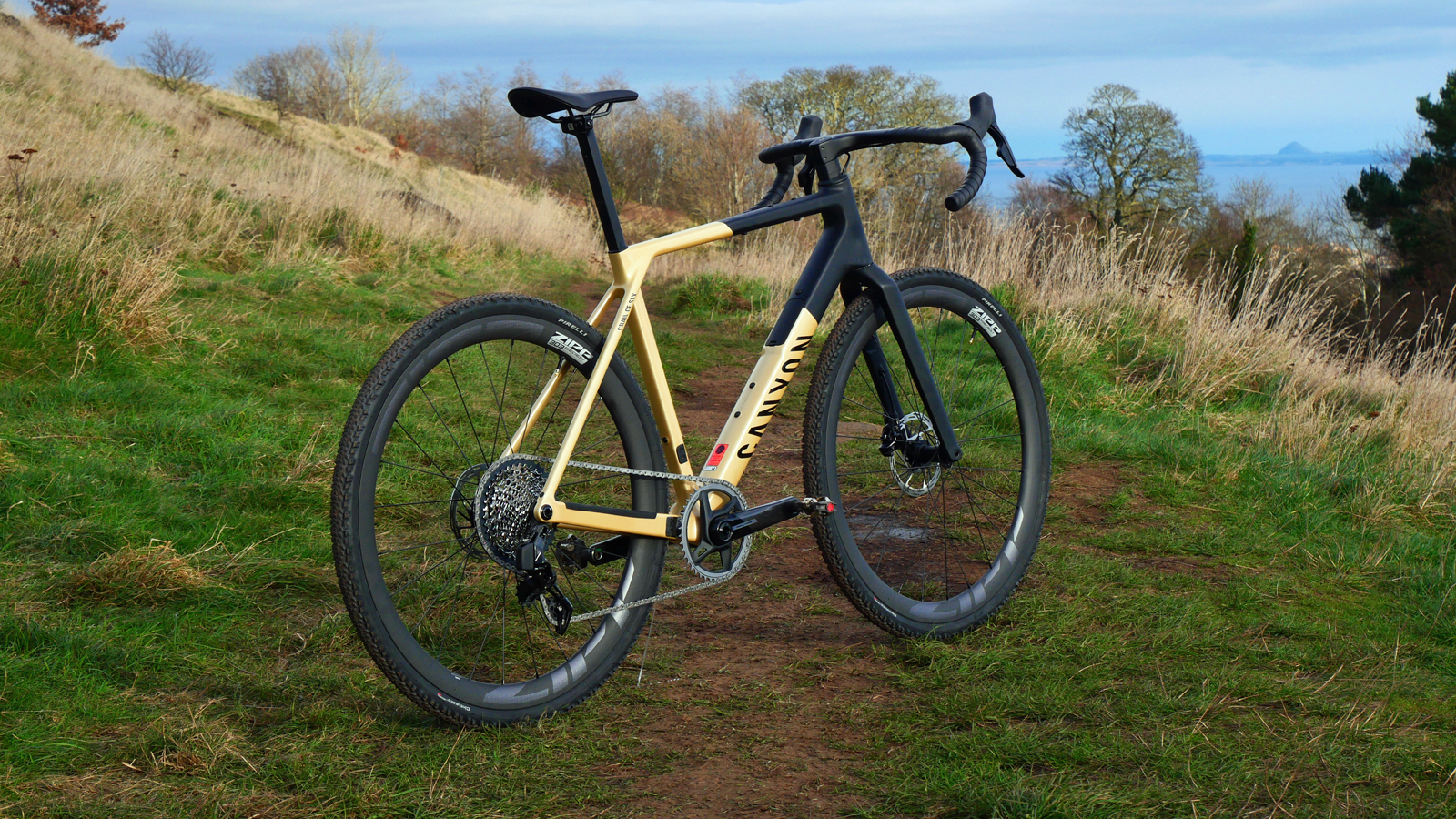
With the adventure-orientated Grizl in its line-up, Canyon was able to rework the geometry of the Grail for racing gravel. It wanted to increase the stability and predictability on rough terrain, which saw the the second-generation Grail’s head angle slackened by a degree (to 71.5 degrees) and increased the wheelbase by 27mm. On their own these changes would slow down handling, to combat this Canyon kept the 425mm chainstays, 69mm trail value, and 75mm bottom bracket drop of the original Grail across all sizes to avoid losing any agility.
The frame comes in sizes 2XS to 2XL, with all sizes rolling on 700c wheels. On paper, sizing is a little odd with the longer top tube and shorter stem setup, but I found the Canyon Size guide offered an accurate recommendation for my numbers.
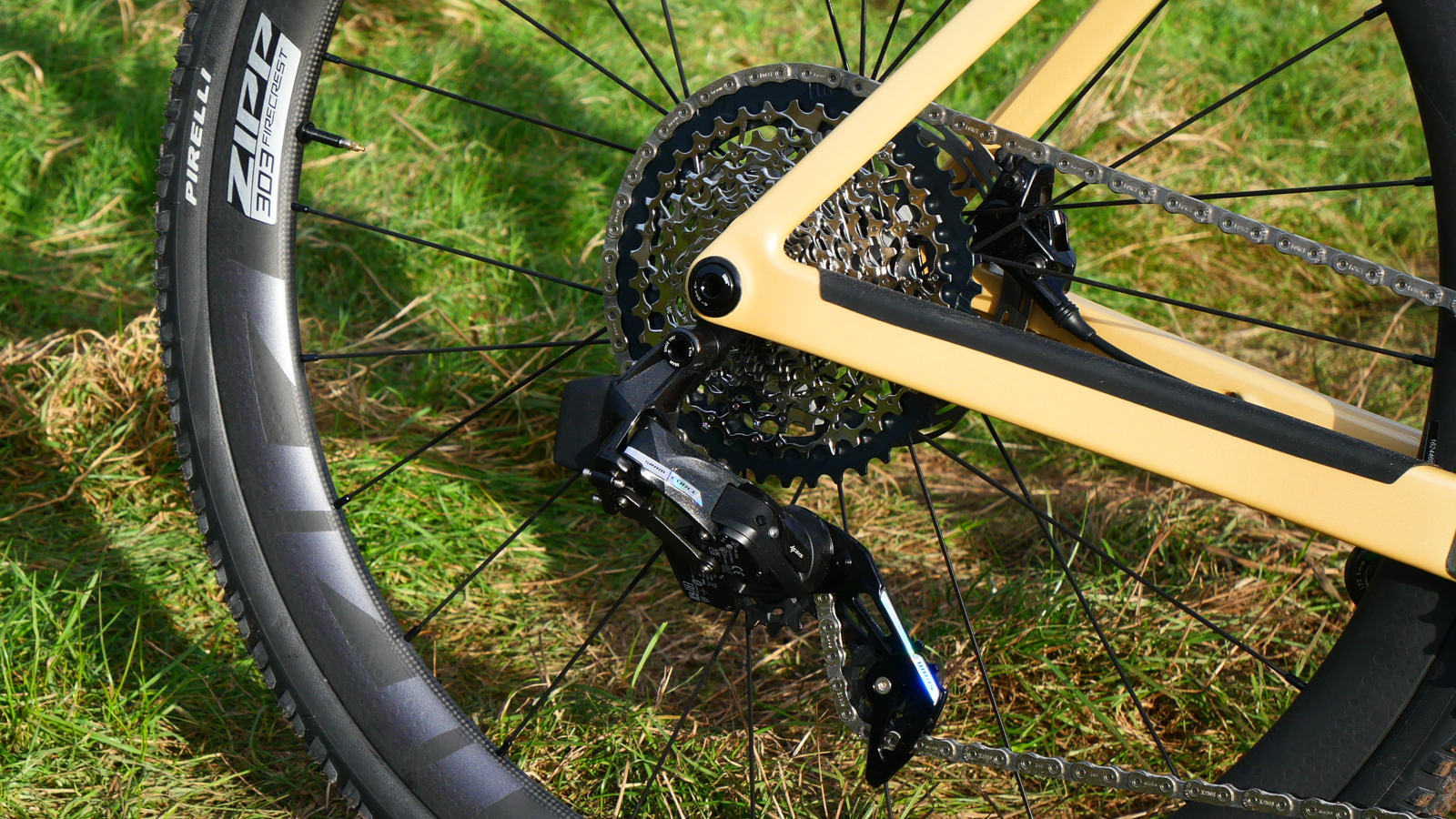
Components and build
Canyon has knocked it out of the park when it comes to the build spec of the Grail CF SLX 8 AXS I have on test and as far as I know, it’s unmatched around the $5,000 price point.
Fitted to the lightweight SLX level frameset (933g, medium, claimed), Canyon has specced a SRAM Force 1X wireless electronic groupset. The groupset offered slick faultless shifting performance and zero chain security issues throughout testing no matter how much mud and grime I subjected it to. To align with the racey nature of the Grail, Canyon has upped the chainring from 40t to 42t, which is paired with a 10-44t 12-speed cassette, giving a little more high-speed oomph, although this does come at the cost of steep grade spinning. The corresponding Force brakes are powerful too and have enough modulation to scrub speed effectively to keep everything under control.
Not only are you getting one of the best gravel groupsets but the Grail CF SLX 8 AXS is also equipped with the outstanding SRAM 303 Firecrest wheelset. Whether on the road or off, the 303 Firecrests are a fast wheelset featuring a 40mm deep rim profile, low weight, and 25mm inner rim diameter that works well with the best gravel bike tires. Canyon has chosen to spec Pirelli Cinturato RC 40mm tires combining a fast-rolling center tread with grippy cornering shoulder lugs.
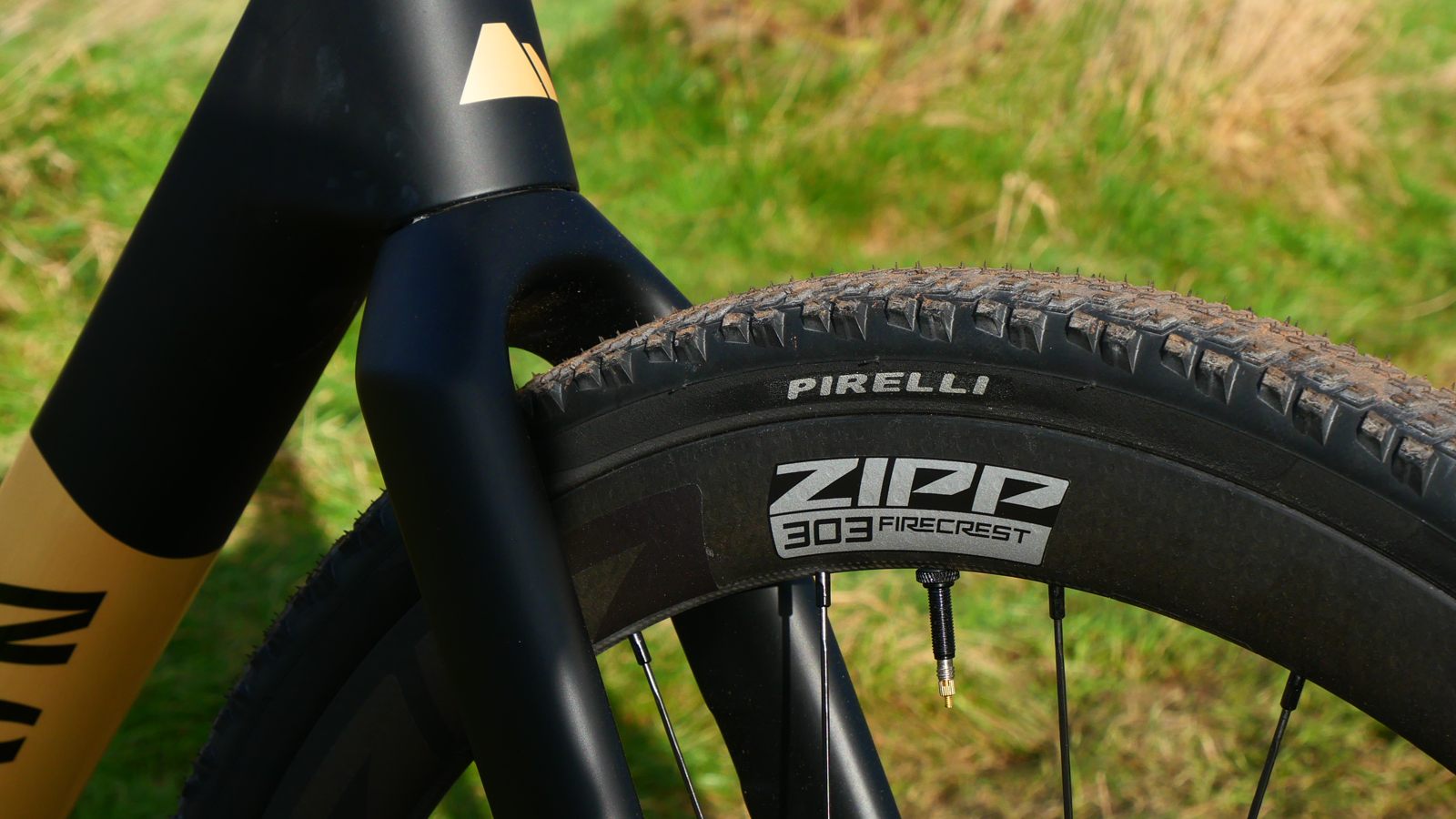
Up front, there is the aforementioned Canyon CP0039 Cockpit (60-420mm on the XXS and XS, 70-420mm on a S, 70-440mm on a M and L, and 80-460mm on the XL and XXL) which is finished in Canyon Ergospeed Gel bar tape. I got on well with the ergonomics of the new integrated handlebar, benefiting from the range of hand position on longer rides and finding they gave great control on descents although for a bike with aero intentions, a 44cm handlebar on a medium bike seems a bit wide.
A Canyon SP0072 seatpost is topped with a Fizik Vento Argo X3 saddle. The seatpost’s seat clamp uses two cone sections that sit inside cups in the seatpost head giving infinite and exact saddle angle adjustment. In theory, the adjustment should be a simple case of loosening the bolt and tilting the saddle. Once torqued to the stated 15Nm, the angle-adjusting cups became extremely tight and I had to forcefully lever them free with a hex key when I needed to adjust the seat angle.
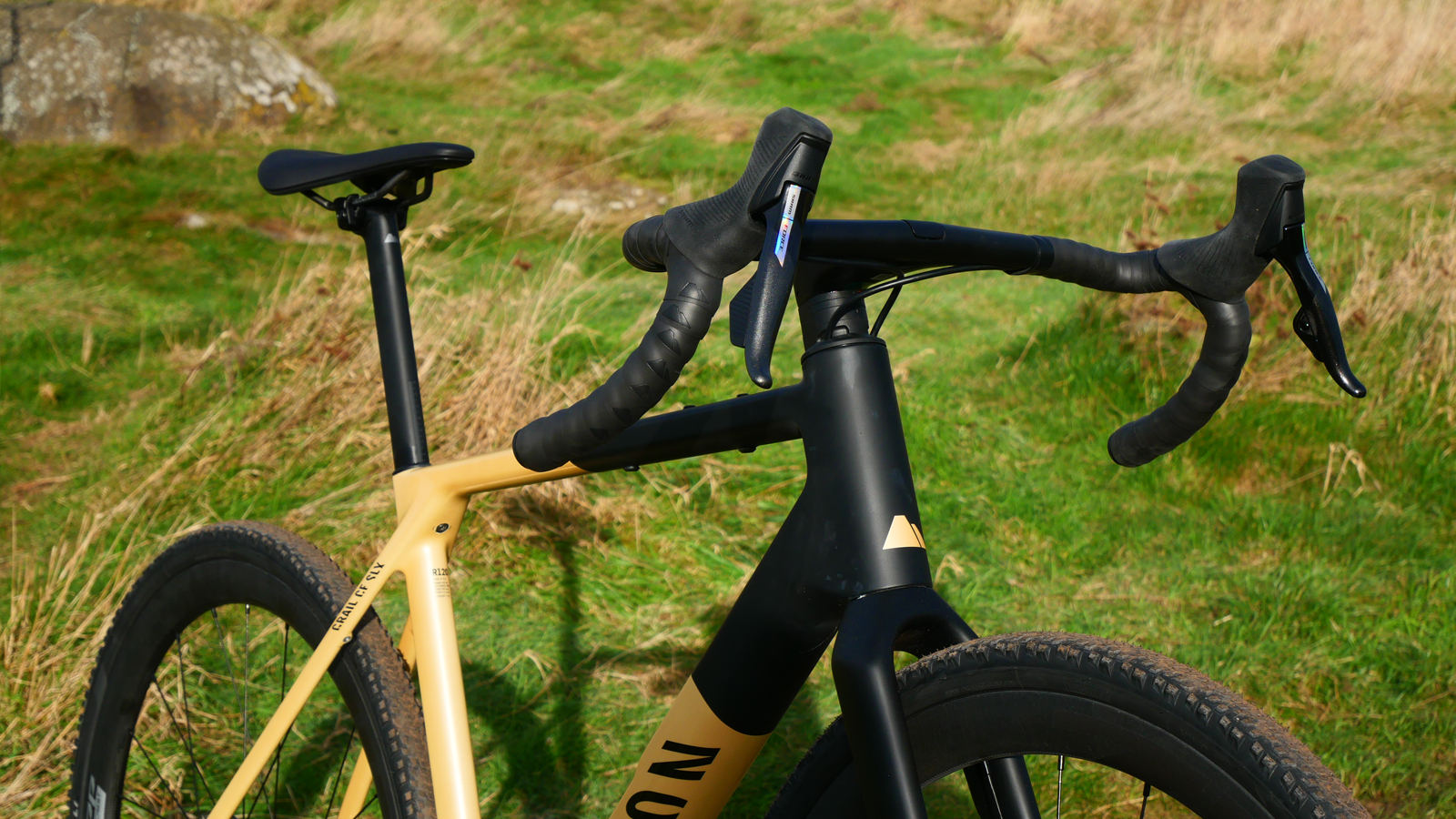
Ride and performance
The work Canyon put into the new geometry is starkly obvious when riding the Grail CF SLX. Adding 27mm more length to a bike with an already longer-than-average wheelbase results in the Grail being spectacularly surefooted and confident through rough terrain. I hurled myself down some properly washed-out high-speed sections during testing and while everything around me started to blur, the Grail remained focused, purposeful, and in control. This doesn’t come at the cost of handling either, while it might not have the lightning reactions of some road-inspired gravel race bikes, the Grail still feels sharp and lively in the corners. The combination of the longer wheelbase, low bottom bracket, and balanced position allows me to confidently drive the tires into the ground to generate maximum grip when carving through corners. When riding with groups you can reap the Grail's cornering prowess by braking later, effortlessly cornering everyone, and exiting more speed through corners. It’s a lot of fun when riding with friends, and a potentially useful tool in a race scenario gapping wheels behind and opening overtaking opportunities through cornering sections.
Not only does it carry considerably more speed through corners and over rough terrain than any other gravel bike I have ridden, it also has plenty of kick to quickly accelerate out the other end. It's direct under pedals, efficiently transferring every bit of rider input into forward motion to surge onwards whether you're powering up a climb or responding to an attack in a race.
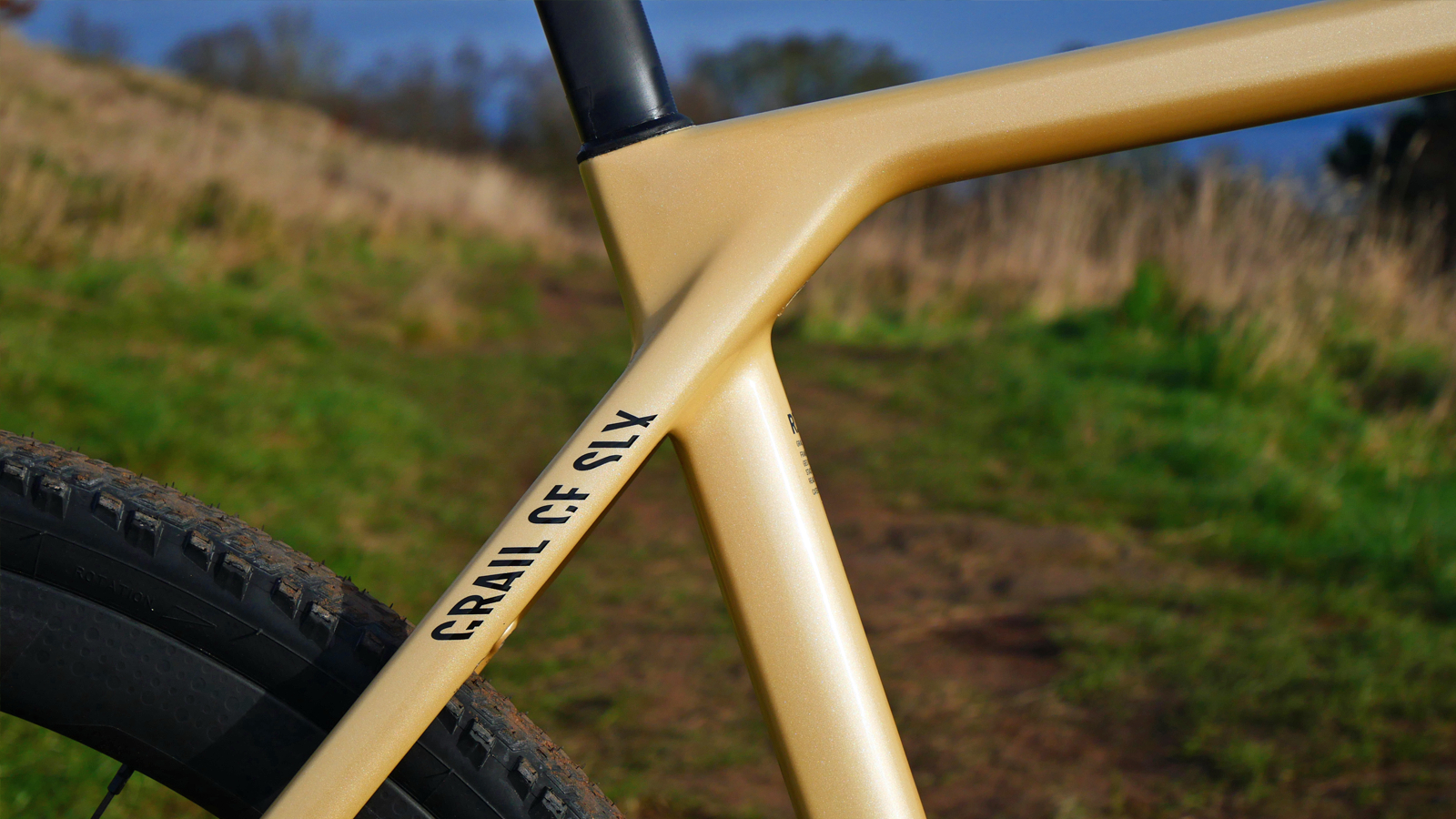
The stiffness that gives the Grail its sharp direct nature comes at the cost of comfort though. The Grail CF SLX’s stiff wheels, stout fork, and rigid frame deliver a good deal of trail feedback to the rider. It’s not designed to be a comfortable cruiser though and I think it's forgivable considering the Grail’s fast rather than far focus. Within the racing remit and usual gravel race surfaces it’s still acceptably comfortable. If your gravel is on the rougher and longer end of the spectrum, you may be better suited to a more forgiving frame with space for tires wider than 42mm.
I can't quantify any real-world aero benefits, although the Grail feels efficient and able to maintain speed better than a non-aero bike. As I don’t race gravel, the actual aero performance has little consequence, it feels faster though and that's all that matters.
I tested Canyon's Gear Groove Computer mount and Load Fidlock Quickloader frame bag, both of which feel well designed, fit perfectly, and worked well. The frame bag is a win-win for practicality and speed if Canyon’s aero claims are to be believed, although it’s a bit smaller inside than I expected. There’s still enough space for snacks or a few tools, plus I think the bike looks great with it fitted
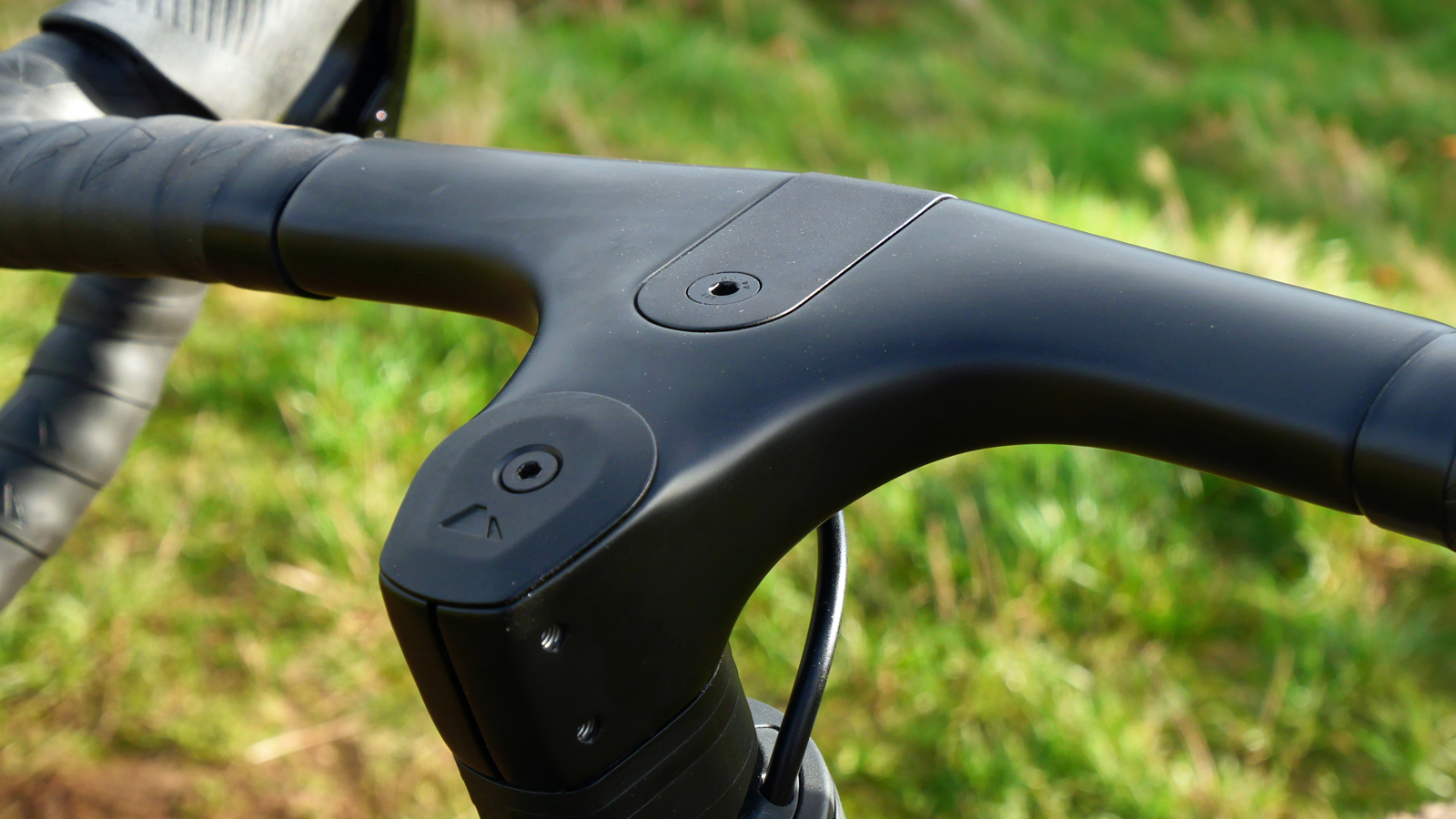
All this Integration harbors some additional costs and potentially major inconveniences. It's great to see downtube storage on a gravel bike but to get the most out of it you need to buy a specific pump (Topeak Micro Rocket Carbon Pump) to fit the hatch clip and/or the Load Tool Pack internal frame storage accessory sleeve – so you can store tools and accessories inside the downtube. It's a similar story with the fork, rather than having bosses on the legs Canyon sells these neat Fork Sleeves that fit onto the forks, except they don't come with any cages so you will need to buy those as well. Do you ever ride at night? Well bad news, because there is no round handlebar section or mounts with an underside action camera fixture to use your current light. The only fitment to attach a light to the integrated bar and stem is by using the Gear Groove, and guess what, the only mount uses a Canyon-specific magnetic light fitting.
To make matters worse the Grail suffers from integration inception. As all handlebar accessories rely on the Gear Groove, you can't run the aero extensions and a light at the same time which is very limiting for ultra events, you will also need to buy a specific Aero Extension Computer Mount if you want to attach your GPS computer to your aero bar setup.
That means although the build spec of the Grail CF SLX 8 AXS is brilliant for the money, there are some additional costs when it comes to kitting out your Grail SLX as any mounts you already own won't be compatible. I think Canyon could have been charitable and included a GPS mount and Load Tool Pack with the bike rather than the customer having to fork out $58.99 / £51.90 extra so they can fit a GPS computer to the bars and use the internal frame storage on the bike. I feel that some of the proprietary accessories are overly expensive as well. The Load Fork Sleeves which, as far as I can tell from the pictures, are no more than some shaped plastic and three bolts which cost £55.95, the Defend Fast Fenders retail for £119.95, and Canyon’s 800-lumen light is priced at $159 / £95.95.
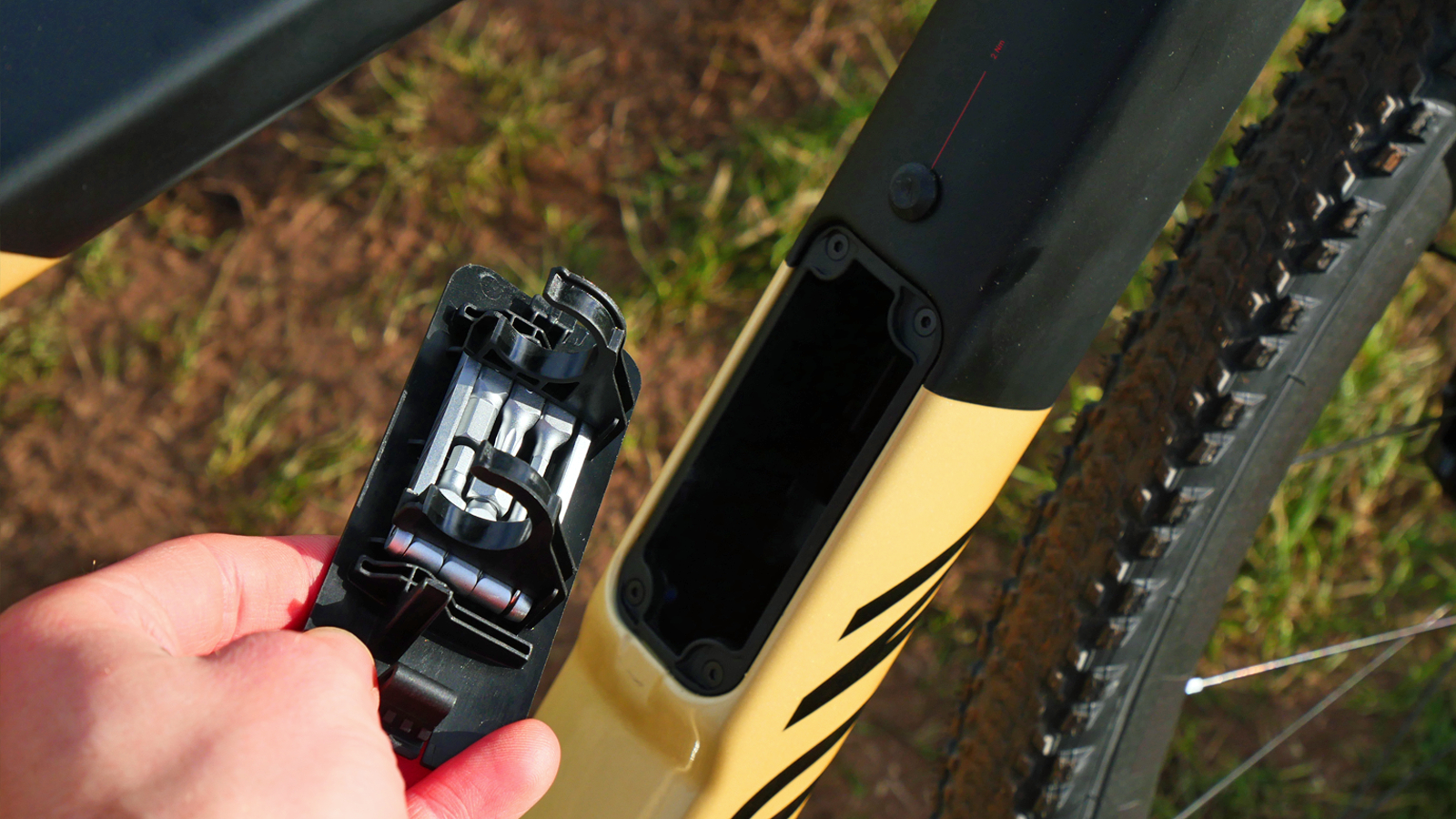
Another issue is availability, at the time of writing, most sizes of the nifty magnetic aero frame bag are out of stock in the UK and I have previously seen the standard GPS mount out of stock in the past. On top of this, the Gear Groove Aero Extensions, Load Fork Sleeves, and mudguards aren’t even listed on the US site either.
My final gripe is the unused internal routing holes under the handlebar sometimes whistle when riding which can be irritating.
Although the handlebars are comfortable, I wouldn’t be surprised to see owners switching to a standard gravel handlebar and stem setup, sacrificing a little aero for the ability to tailor fit and increase accessory convenience and choice by ditching the Gear Groove. It’s also worth noting the above integration frustration only applies to the CF SLX and CFR models, the more affordable CF SL model’s CP0039 handlebar has the same dimensions but doesn’t feature the Gear Groove. Instead, it has a more conventional two-bolt ITS fixing for accessories.
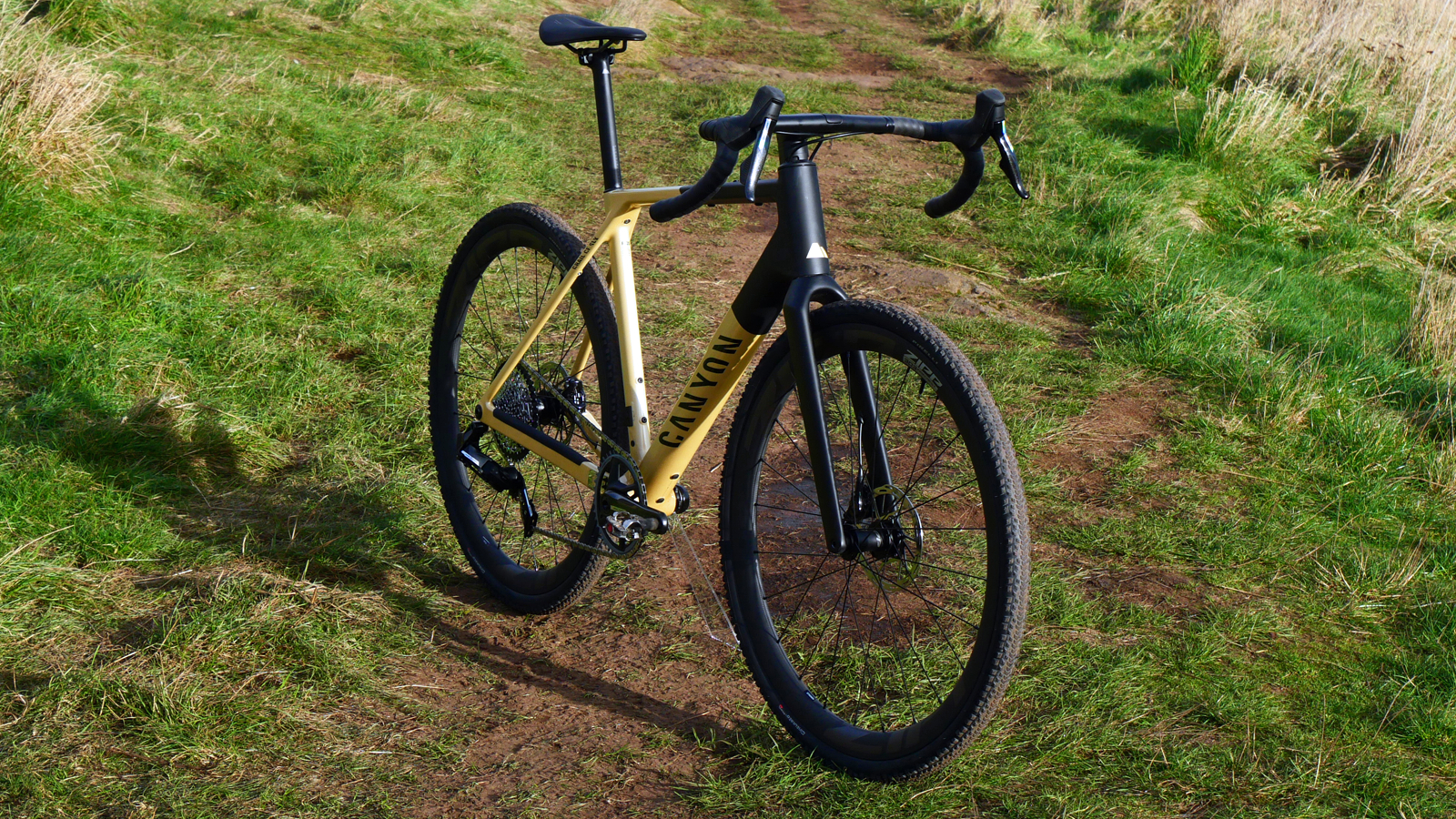
Verdict
If you are willing to go all in with the integration, then the Grail is a super fast race-focused gravel bike. The handling and control of the Grail make it one of the most capable and controlled gravel bikes I have ever ridden. Cornering is utterly instinctual, generating grip and offering stability that allows you to carry speed through corners effortlessly. It's fast in a straight line too, quickly spinning up to speed and eating up miles of gravel with ease.
The double-decker bar put the original Grail on the map – although many will be pleased to see the back of it. The new one-piece Double Drop cockpit has a more conventional aesthetic and a comfortable controlling position, but it’s plagued with its own unconventional accessory mounting issues. If you’re happy to commit to the Canyon ecosystem and your bike fit suits the handlebar dimensions, you will get on well with the Double Drop bar. If you don’t, the good news is you can replace it with a conventional handlebar and stem setup, at your expense mind you.
If you're specific with your setup or just unwilling to fall in line with the Grail-specific Canyon ecosystem then the Grail SLX is going to be limiting. I wouldn’t particularly class myself as either and I still feel that Canyon has gone too far down the integration rabbit hole. The Grail SLX is an outstanding bike to ride and the accessories I tested alongside the Grail worked well, but I think it's too restrictive to live with. To avoid the integrated woes of the Grail CF SLX, the Grail CF SL 7 AXS with a gravel wheel upgrade will offer the same amazing ride quality, sacrificing the internal downtube storage for a handlebar with a more conventional two-bolt attachment. If racing isn't a priority, I would be opting for Canyon’s Grizl CF SLX 8 EKAR (UK), Grizl CF SL 8 EKAR (UK), or Grizl CF SL 8 1by (US) instead. The Grizl carries a touch more weight but it rides really well, has more tire clearance, zero integration woes, and costs considerably less so you could also upgrade to a lighter set of wheels too.
Test conditions
- Temperature: 50 to 90 degrees F / 10 to 32 degrees C
- Conditions: Wet and muddy to hard and dusty
- Trails: Gravel, forest tracks, farm roads, singletrack, and road
Tech specs: Canyon Grail CF SLX 8 AXS
- Frame: Canyon Grail CF SLX
- Drivetrain: SRAM Force XPLR AXS, 12-speed
- Brakes: SRAM Force AXS HRD D2, 160mm
- Wheelset: Zipp 303 Firecrest
- Tires: Zipp 303 Firecrest, 40mm
- Bar and stem: Canyon Cockpit CP0039
- Seatpost: Canyon SP0072
- Saddle: Fizik Vento Argo X3
- Sizes available: 2XS, XS, S, M, L, XL, 2XL
- Price: $5,599 / £4,949
- Weight: 8.1kg (medium tested)







